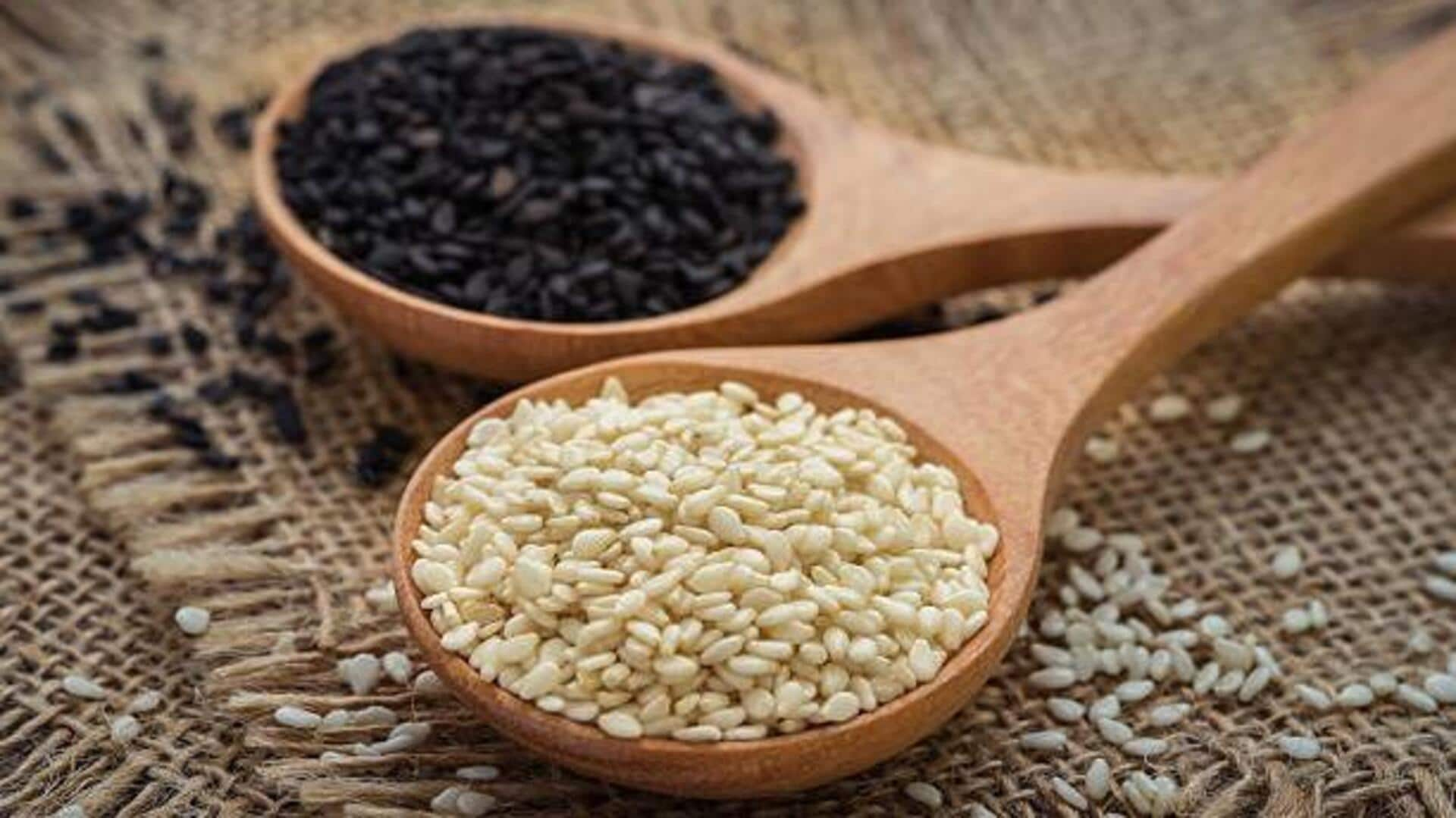
Sesame seeds: The secret to authentic Asian dishes
What's the story
A staple in Asian vegetarian cooking, sesame seeds add a nutty flavor and crunchy texture to dishes, making them absolutely delicious. These tiny, yet nutrient-dense seeds are so versatile that they can elevate the most mundane stir-fry, salad, etc. to something deliciously memorable. They are irreplaceable when it comes to making authentic Asian vegetarian dishes.
#1
White sesame seeds for versatile use
White sesame seeds find usage in several Asian cuisines as they're mild in flavor and versatile. They can be toasted to get a richer flavor or can be used raw as a garnish on salads, noodles, or rice dishes. These are often ground into paste form to prepare tahini, an essential ingredient in several sauces and dressings. Their subtle nutty flavor goes with sweet and savory dishes.
#2
Black sesame seeds for rich flavor
Black sesame seeds are stronger in flavor than white ones, which makes them perfect for lending depth to your dishes. They are usually incorporated in desserts such as black sesame soup or sprinkled over sushi rolls for added texture and appearance. The rich taste of black sesame complements soy sauce-based marinades or dressings, elevating the overall umami profile of vegetarian recipes.
#3
Toasted sesame seeds for enhanced aroma
Toasted sesame seeds provide an enhanced aroma that can elevate plain dishes to the next level. The process of toasting releases natural oils in the seeds, intensifying their nutty flavor. They can be sprinkled over stir-fried vegetables or added to dipping sauces for an additional flavor. Toasted sesame oil is also a favorite in Asian cuisine as it adds a unique fragrance drizzled over plated dishes.
Tip 1
Hulled vs Unhulled: Nutritional differences
Hulled sesame seeds have had their outer shell removed, making them lighter and milder in taste than unhulled ones that are richer in nutrients (the intact hulls have fiber-rich bran layers along with calcium content 20% more than hulled ones). Choosing between the two depends on whether you prefer texture or nutrition from either type in your home-cooked meals made using traditional methods passed down generations across Asia's diverse culinary landscape.